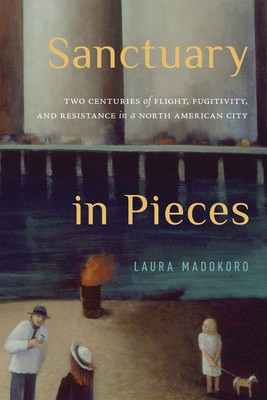
- We will send in 10–14 business days.
- Author: Laura Madokoro
- Publisher: McGill-Queen's University Press
- ISBN-10: 0228022878
- ISBN-13: 9780228022879
- Format: 15.5 x 22.8 x 2.3 cm, minkšti viršeliai
- Language: English
- SAVE -10% with code: EXTRA
Reviews
Description
Over the past two decades, the Sanctuary City movement has resulted in hundreds of jurisdictions declaring themselves safe spaces for undocumented migrants and people without status. Although they often draw on historical precedent, public sanctuary efforts amongst settler societies are markedly different from how refuge was conceptualized in the past. To explore these broad shifts, Sanctuary in Pieces looks at the history of protection and hospitality in Montreal/Mooniyaang/TiohtiÃÂ ke over two hundred years. Laura Madokoro traces the movements and experiences of fugitive slaves, wanted criminals, internationally renowned anarchists, and war resisters before turning to instances of public sanctuary practices since the 1970s. As people sought and forged refuge, they navigated a web of social connections, political agendas, and economic realities, testing the notion of the city and whom it was for. Even as those in search of sanctuary imagined, and often enacted, possible futures in the city, sanctuary was far from easy: it lay in an underground marked by refusal and denial, selective compassion and solidarity, and sometimes outright animosity. This contested and tumultuous history offers a profound challenge to the symbolism and substance of contemporary sanctuary city efforts. Conceptually innovative, Sanctuary in Pieces speaks to activist and policy considerations in the present, the making and unmaking of community, and how historical practice can accommodate silence in studies of intimate experiences of mobility and, on occasion, refuge.
EXTRA 10 % discount with code: EXTRA
The promotion ends in 23d.00:32:02
The discount code is valid when purchasing from 10 €. Discounts do not stack.
- Author: Laura Madokoro
- Publisher: McGill-Queen's University Press
- ISBN-10: 0228022878
- ISBN-13: 9780228022879
- Format: 15.5 x 22.8 x 2.3 cm, minkšti viršeliai
- Language: English English
Over the past two decades, the Sanctuary City movement has resulted in hundreds of jurisdictions declaring themselves safe spaces for undocumented migrants and people without status. Although they often draw on historical precedent, public sanctuary efforts amongst settler societies are markedly different from how refuge was conceptualized in the past. To explore these broad shifts, Sanctuary in Pieces looks at the history of protection and hospitality in Montreal/Mooniyaang/TiohtiÃÂ ke over two hundred years. Laura Madokoro traces the movements and experiences of fugitive slaves, wanted criminals, internationally renowned anarchists, and war resisters before turning to instances of public sanctuary practices since the 1970s. As people sought and forged refuge, they navigated a web of social connections, political agendas, and economic realities, testing the notion of the city and whom it was for. Even as those in search of sanctuary imagined, and often enacted, possible futures in the city, sanctuary was far from easy: it lay in an underground marked by refusal and denial, selective compassion and solidarity, and sometimes outright animosity. This contested and tumultuous history offers a profound challenge to the symbolism and substance of contemporary sanctuary city efforts. Conceptually innovative, Sanctuary in Pieces speaks to activist and policy considerations in the present, the making and unmaking of community, and how historical practice can accommodate silence in studies of intimate experiences of mobility and, on occasion, refuge.


Reviews